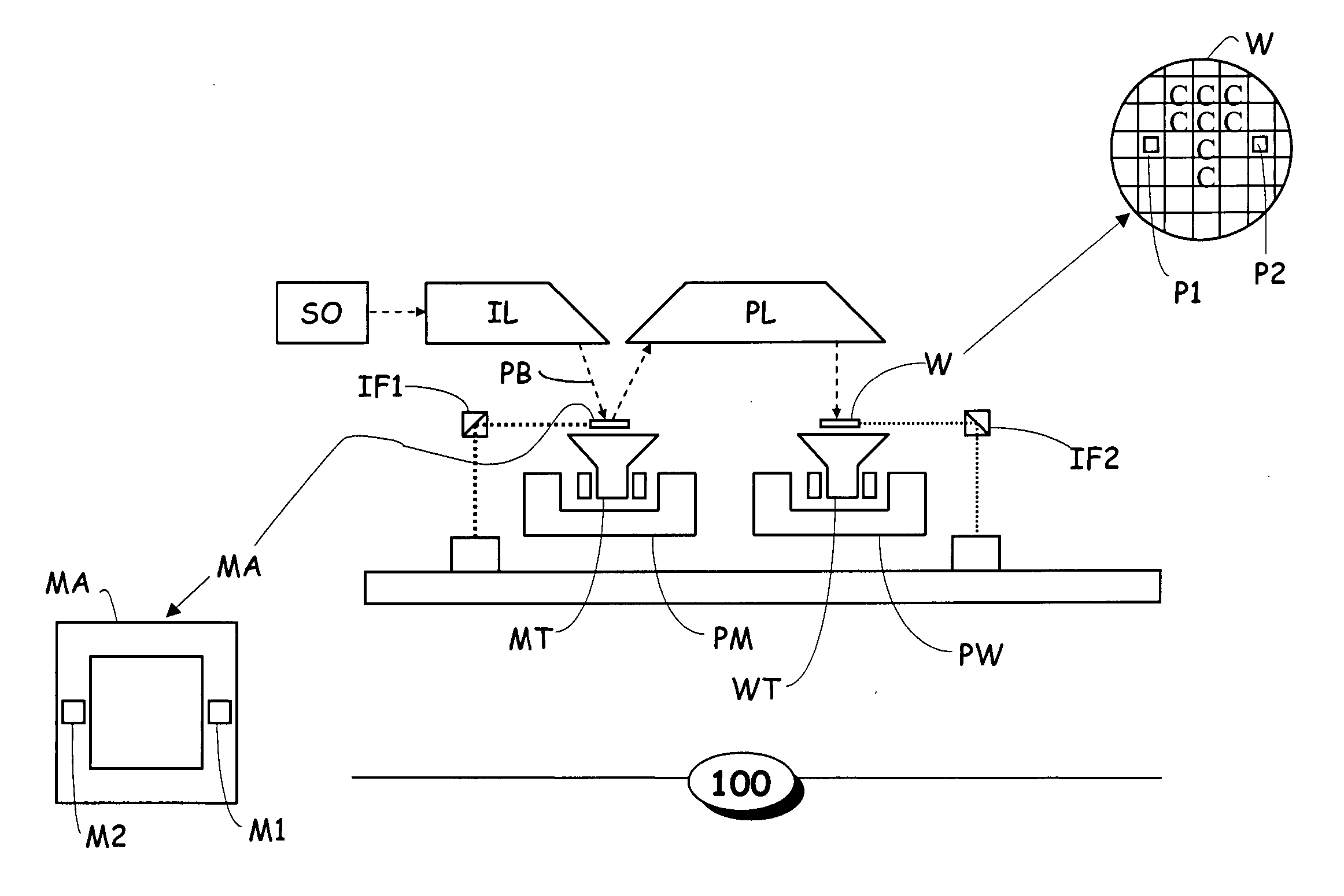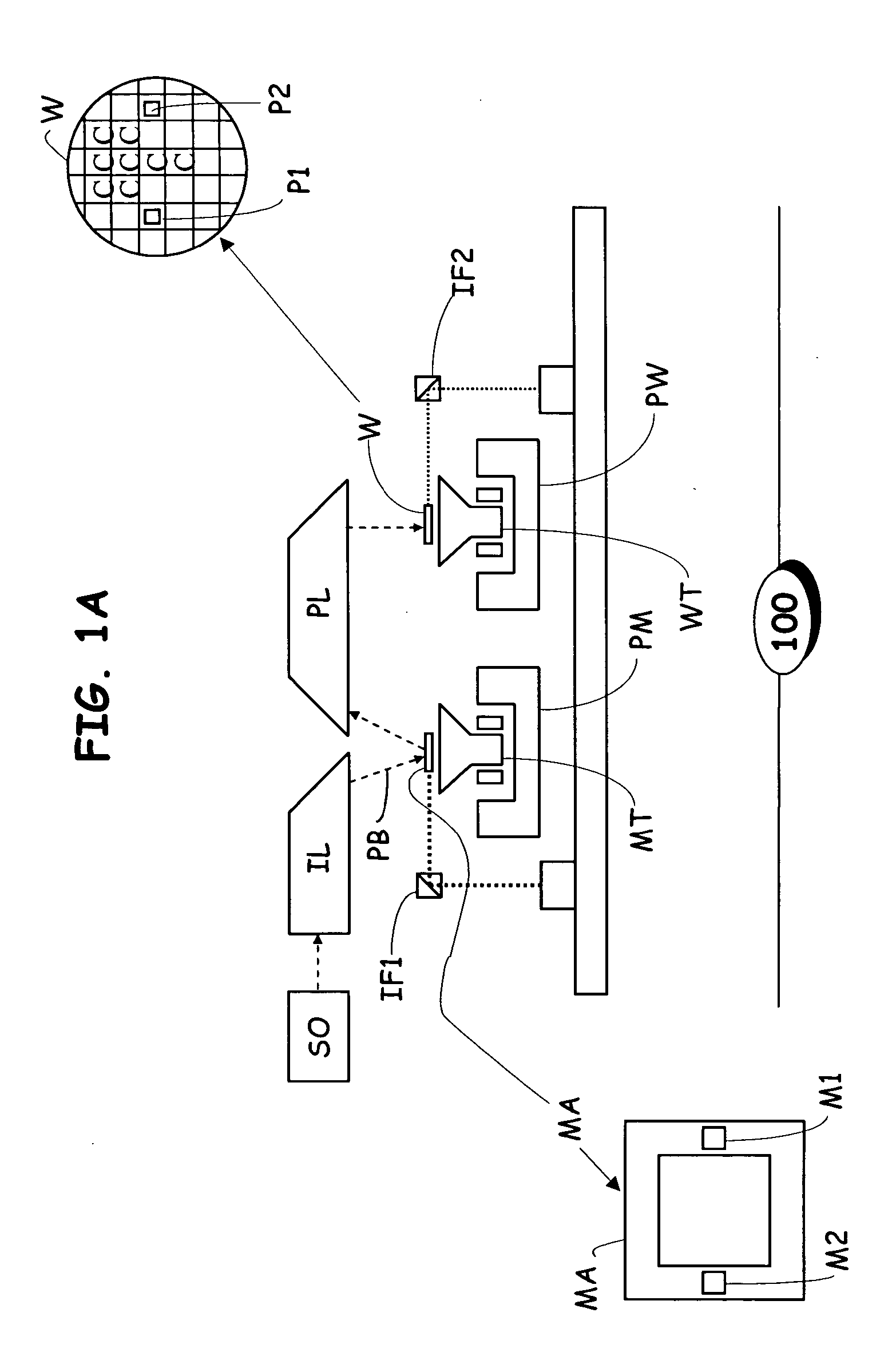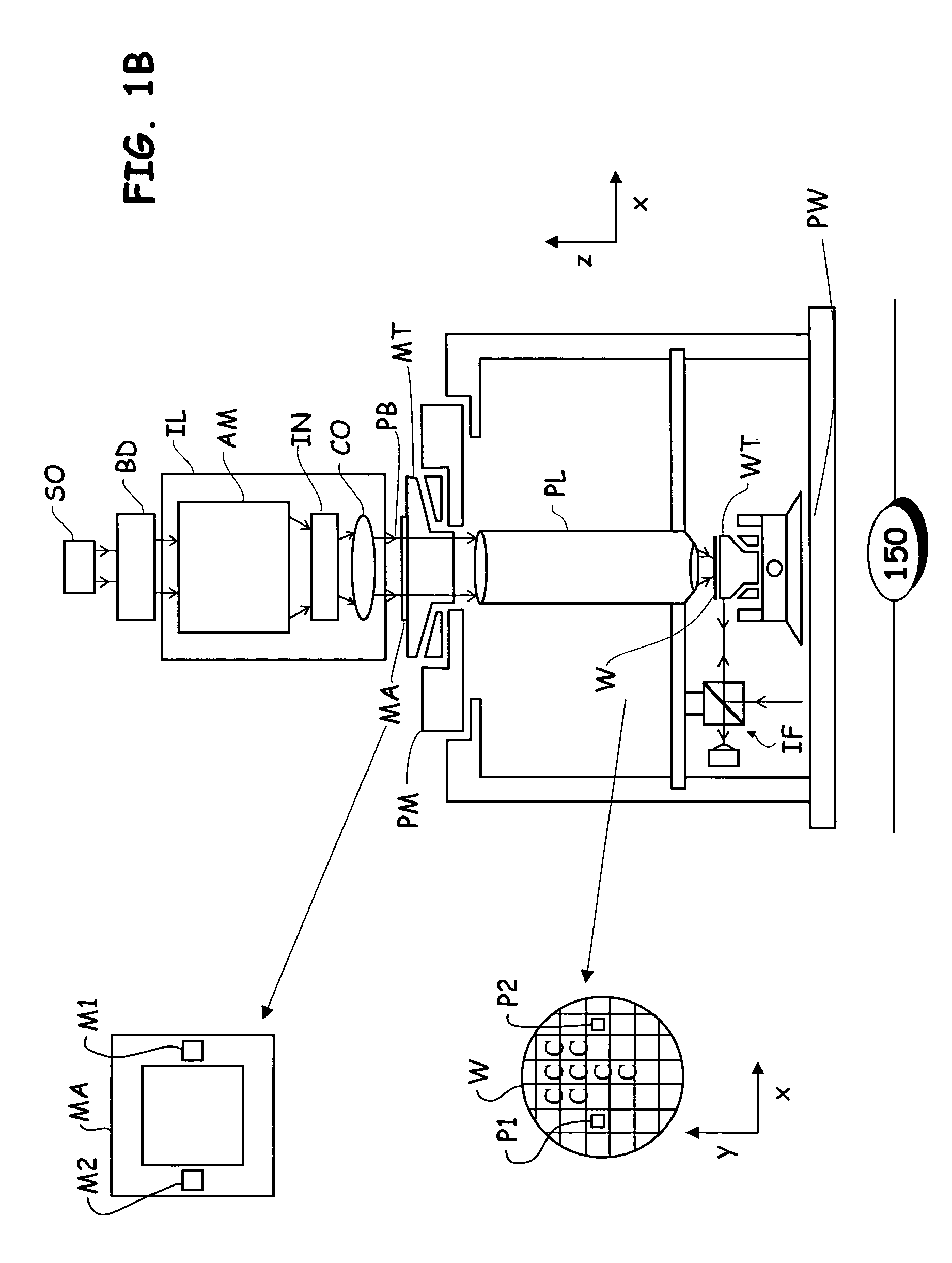Optimized correction of wafer thermal deformations in a lithographic process
a lithographic process and thermal deformation technology, applied in the field of lithographic equipment, can solve problems such as overlay errors, compromising the quality of exposed patterns, and contributing to overlay errors,
- Summary
- Abstract
- Description
- Claims
- Application Information
AI Technical Summary
Benefits of technology
Problems solved by technology
Method used
Image
Examples
first embodiment
[0065]FIG. 2A schematically depicts the general inventive concept of thermal correction process 200, constructed and operative in accordance with a particular embodiment of the present invention. As indicated in FIG. 2A, correction process 200 commences with procedure task P202, which provides the initial exposure recipe. The exposure recipe designates the amount of energy to be focused by the projection beam PB onto each of the target fields Ci-CN of the wafer substrate W to comply with the manufacturer's specified features and profile of the exposed pattern. It will be appreciated that, for some embodiments, it is desirable to maintain the total energy dose received by the target fields Ci-CN of the wafer substrate W constant. However, even in these embodiments, the exposure time (i.e., scanning speed) and exposure energy (e.g., laser power) may be configured as adjustable parameters in the exposure recipe, provided that the total energy dose remains constant, in order to reduce t...
second embodiment
[0075]FIG. 2B schematically depicts the general inventive concept of thermal correction process 250, constructed and operative in accordance with a particular embodiment of the present invention. As indicated in FIG. 2B, correction process 250 commences with procedure task P252, which provides the initial exposure recipe. As discussed above, the exposure recipe may include exposure time, exposure energy, exposure coordinate positioning, and exposure sequencing information.
[0076] Thermal correction process 250 then advances to procedure task P254, where the target fields Ci-CN of wafer substrate W are successively exposed with the desired pattern by lithographic apparatus 100, 150, in a manner consistent with the description above and in accordance with the exposure recipe.
[0077] After exposure, correction process 250 then progresses to procedure task P256, where the exposed wafer substrate W is subjected to a measurement process. The measurement process is configured to measure va...
third embodiment
[0081]FIG. 3 schematically depicts the general inventive concept of thermal correction process 300, constructed and operative in accordance with a particular embodiment of the present invention. As indicated in FIG. 3, correction process 300 commences with procedure task P302, which provides the initial exposure recipe. As discussed above with respect to the other disclosed embodiments, the exposure recipe may include exposure time, exposure energy, exposure coordinate positioning, and exposure sequencing information.
[0082] Thermal correction process 300 then advances to procedure task P304, where thermal corrections are determined. In this embodiment, the thermal corrective information takes the form of predictive deformation information based on a global expansion model. In particular, as depicted in FIG. 1G, for example, the deformation due to thermal effects of a selected point (x,y) within the area of each target field Ci may be modeled as: (x+Δx, y+Δy), where Δx, Δy represent...
PUM
 Login to View More
Login to View More Abstract
Description
Claims
Application Information
 Login to View More
Login to View More - R&D
- Intellectual Property
- Life Sciences
- Materials
- Tech Scout
- Unparalleled Data Quality
- Higher Quality Content
- 60% Fewer Hallucinations
Browse by: Latest US Patents, China's latest patents, Technical Efficacy Thesaurus, Application Domain, Technology Topic, Popular Technical Reports.
© 2025 PatSnap. All rights reserved.Legal|Privacy policy|Modern Slavery Act Transparency Statement|Sitemap|About US| Contact US: help@patsnap.com



